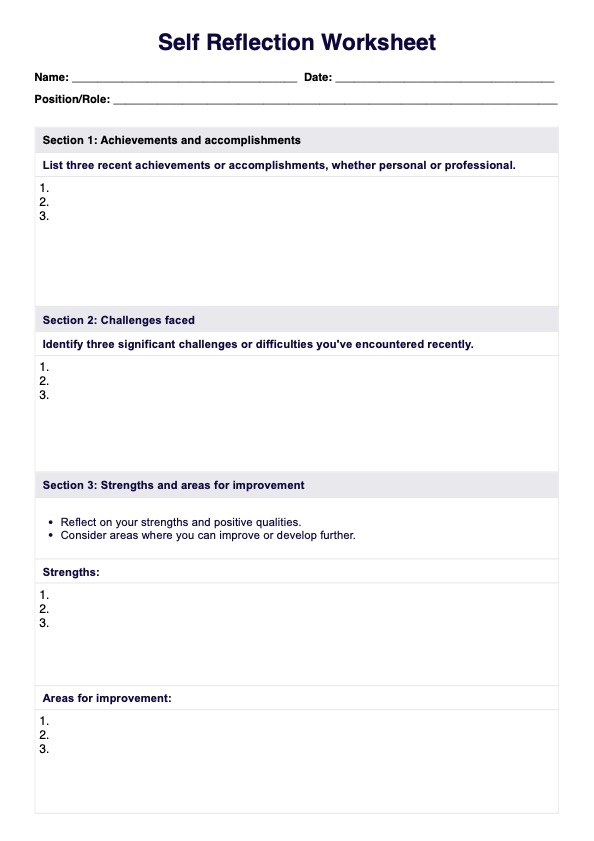Students, professionals, therapists, educators, and anyone seeking personal or professional development use self-reflection worksheets.

Self Reflection Worksheets
Enhance self-awareness and personal growth with our Self-Reflection Worksheet. Explore your thoughts, set goals, and achieve self-improvement.
Use Template
Self Reflection Worksheets Template
Commonly asked questions
They are used after significant events, during transitions, periodically for goal setting, and during personal or professional challenges.
They are filled out by responding to prompts and questions, encouraging deep introspection and self-assessment. Responses can be written or typed.
EHR and practice management software
Get started for free
*No credit card required
Free
$0/usd
Unlimited clients
Telehealth
1GB of storage
Client portal text
Automated billing and online payments











